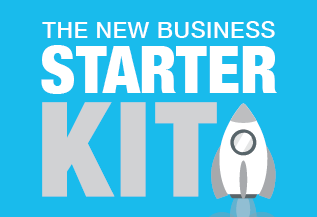Immediate Write-Off For Individual Small Business Assets
.png)
The accelerated depreciation write-off for small businesses has been extended to 30th June 2020 and the threshold has increased to $30,000.
Businesses with a turnover of up to $10 million can claim a deduction for each asset purchased and first used or installed ready for use, up to the following thresholds:
- $30,000, from 7.30pm (AEDT) on 2 April 2019 until 30 June 2020
- $25,000, from 29 January 2019 until before 7.30pm (AEDT) on 2 April 2019
- $20,000, before 29 January 2019.
The instant asset write-off is now available to businesses with a turnover from $10 million to less than $50 million. These businesses can claim a deduction of up to $30,000 for the business portion of each asset (new or second hand), purchased and first used or installed ready for use from 7.30pm (AEDT) on 2 April 2019 until 30 June 2020.
On face value the instant asset write-off is a very appealing tax concession, however, there are a number of conditions you need to satisfy. Firstly, the asset must be used in the business for income-producing purposes. The Tax Office have stated they will monitor usage to detect ‘rorts’ so once you lodge your tax return you might get a ‘please explain’ letter from the ATO asking for more details.

The current $30,000 threshold only applies to assets that were first acquired at or after 7:30 pm (AEST) on 2nd April 2019 and they were first used (or installed ready for use) on or before 30 June of the year you claim the deduction. The increased threshold is available to all small businesses (including those who previously opted out of the simplified depreciation rules). Depreciating assets for Primary Producers have a different set of criteria.
Here are some key points to consider:
- The asset can be new or second hand
- To be eligible, the asset must be purchased by a business turning over less than $50m (see above)
- The amount must be under $30,000 (or $20,000 depending on date of purchase) exclusive of GST (i.e. $33,000 including GST)
- If you borrow to purchase the asset, the asset is still eligible
- The asset must be installed and ready to use by the deadline (purchasing a car to be delivered in the future won’t qualify until the car is actually delivered)
- To claim the write-off on a motor vehicle you will need to have a valid log book and claim only that percentage of the cost as an immediate write-off
- Some taxpayers may try to reduce the cost of an asset to under $30k by using a trade-in when purchasing the asset (for example a car). However, the monetary value of the trade-in will form part of the asset cost and not reduce the cost of the asset.
- Any attempt to manipulate invoices etc. will attract the ATO's use of the anti-avoidance rules, thereby eliminating the $30,000 write off.
- If your business has a small profit or even a loss, the write-off will be of little or no benefit in the current year (losses are not refundable but can be carried forward to the next year)
-
Building structural improvements are not eligible for the instant write-off

- Depreciating assets valued at more than $30,000 will be depreciated in one pool at a rate of 15% in the first year and 30% in future years
- If your pool balance at the end of the year is less than $30,000 before applying any other depreciation deduction, the entire pool balance can be written off
- If your business is not a ‘Small Business Entity’ you will need to depreciate all assets purchased over $300. Any assets purchased for $100 or less, used to earn business income, can be written off immediately
Other 2019 Year End Tax Planning Opportunities
- Back to the overview of the 2019 Year End Tax Planning Guide
- Round Up of Other Year End Tax Issues
- Pre June 30 Tax Minimisation Strategies
- Other Tax Effective Strategies
- Superannuation Tax Planning Opportunities
- Download the full PDF
Disclaimer: This newsletter contains general information only. Regrettably, no responsibility can be accepted for errors, omissions or possible misleading statements or for any action taken as a result of any material in this guide. It is not designed to be a substitute for professional advice, as such a brief guide cannot hope to cover all circumstances and conditions applying to the law as it relates to these items.





